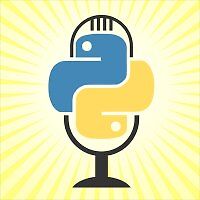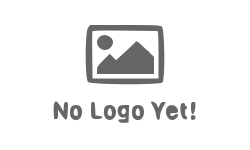-
Урок 1.
00:00:44
Introducing the course
-
Урок 2.
00:01:36
The incredible power of web
-
Урок 3.
00:03:17
What is fullstack development?
-
Урок 4.
00:01:34
Student expectations and pre-reqs
-
Урок 5.
00:02:28
The technologies we will learn
-
Урок 6.
00:05:18
What can you build with Python?
-
Урок 7.
00:06:05
Course topics
-
Урок 8.
00:00:52
Meet your instructor
-
Урок 9.
00:02:06
What app will we build for this course?
-
Урок 10.
00:02:05
Video player: A quick feature tour
-
Урок 11.
00:02:40
Do you have Python 3? How do you get it?
-
Урок 12.
00:00:59
Our code editor
-
Урок 13.
00:00:36
Git the source code
-
Урок 14.
00:01:26
Following along
-
Урок 15.
00:02:39
What are microframeworks?
-
Урок 16.
00:03:32
Building blocks of Flask
-
Урок 17.
00:03:01
Building block: Views
-
Урок 18.
00:01:16
Building block: Routes and URLs
-
Урок 19.
00:01:49
Building block: Models
-
Урок 20.
00:02:29
Building block: Dynamic HTML Templates
-
Урок 21.
00:00:59
Get the back story
-
Урок 22.
00:02:58
Introduction to creating a Flask website
-
Урок 23.
00:05:56
Demo: CLI starter site
-
Урок 24.
00:03:00
Concepts: CLI starter site
-
Урок 25.
00:03:47
Demo: Creating the starter project PyCharm
-
Урок 26.
00:01:26
Concept: Creating the starter project PyCharm
-
Урок 27.
00:03:10
Project structure
-
Урок 28.
00:01:24
Template chapter introduction
-
Урок 29.
00:02:31
Jinja2 template example
-
Урок 30.
00:03:42
Create the PyPI site
-
Урок 31.
00:08:11
Our first jinja template
-
Урок 32.
00:01:43
Concept: Jinja2 templates
-
Урок 33.
00:03:20
Layout: Motivation
-
Урок 34.
00:01:13
Jinja2 autocomplete in PyCharm
-
Урок 35.
00:05:21
Adding a simple nav element
-
Урок 36.
00:05:08
Creating a common layout page
-
Урок 37.
00:02:02
Better organization for your template files
-
Урок 38.
00:02:29
Concepts: Common layout
-
Урок 39.
00:01:35
Project structure with shared layout
-
Урок 40.
00:03:38
Demo: @response a better render_template
-
Урок 41.
00:02:03
Concept: @response a better render_template
-
Урок 42.
00:03:52
Routing visualized
-
Урок 43.
00:01:23
Demo: Routing, loading the project
-
Урок 44.
00:09:13
Refactoring view methods with Flask blueprints
-
Урок 45.
00:01:21
Concept: Refactoring view methods with Flask blueprints
-
Урок 46.
00:03:42
Adding a constrained route
-
Урок 47.
00:02:59
The account management routes
-
Урок 48.
00:01:29
Concept: Create route from url
-
Урок 49.
00:07:55
How to build a CMS in 8 minutes
-
Урок 50.
00:01:18
Concept: Routing to add a custom CMS
-
Урок 51.
00:00:54
What we'll cover
-
Урок 52.
00:02:03
CSS Front-end framework survey
-
Урок 53.
00:04:51
Introduction to using Bootstrap
-
Урок 54.
00:01:00
Running in a real web server
-
Урок 55.
00:02:53
Intro to grid layout
-
Урок 56.
00:01:13
Responsive browser tools
-
Урок 57.
00:01:35
Grid layout in action
-
Урок 58.
00:03:25
Adding to the grid
-
Урок 59.
00:01:44
Concept: Grid layout
-
Урок 60.
00:01:15
Buttons and forms
-
Урок 61.
00:04:48
Buttons and forms in action
-
Урок 62.
00:03:32
Style the login form
-
Урок 63.
00:01:31
Concept: Buttons and forms
-
Урок 64.
00:01:43
Why Bootstrap themes are awesome
-
Урок 65.
00:05:45
Bootstrap theme tour
-
Урок 66.
00:03:15
Our site design
-
Урок 67.
00:05:12
Home page HTML
-
Урок 68.
00:05:23
The making of the hero
-
Урок 69.
00:03:20
Stats slice
-
Урок 70.
00:03:49
New releases
-
Урок 71.
00:03:50
Adding the navigation
-
Урок 72.
00:03:57
Final footer
-
Урок 73.
00:04:07
Introducing SQLAlchemy
-
Урок 74.
00:01:35
Who uses SQLAlchemy?
-
Урок 75.
00:02:14
Architecture
-
Урок 76.
00:03:11
The database model
-
Урок 77.
00:08:31
Modeling packages
-
Урок 78.
00:01:52
SQLAlchemy model base class
-
Урок 79.
00:06:01
Connecting to our 'database'
-
Урок 80.
00:06:27
Creating tables
-
Урок 81.
00:05:01
Indexes
-
Урок 82.
00:04:25
The rest of the tables
-
Урок 83.
00:07:17
Relationships
-
Урок 84.
00:04:15
Concepts: Modeling
-
Урок 85.
00:02:19
Creating the basic insert script
-
Урок 86.
00:01:36
Connecting to the database (again)
-
Урок 87.
00:01:34
Setting package values
-
Урок 88.
00:03:37
Saving the package to the db
-
Урок 89.
00:02:35
Running the inserts
-
Урок 90.
00:01:21
Adding type hints to the session factory
-
Урок 91.
00:01:39
Inserting real PyPI data
-
Урок 92.
00:02:23
Concept: Unit of work
-
Урок 93.
00:05:55
Querying data: Home page
-
Урок 94.
00:09:04
Querying data: Latest releases
-
Урок 95.
00:09:19
Working with package details
-
Урок 96.
00:04:03
Concept: Querying data
-
Урок 97.
00:00:45
Concept: Ordering data
-
Урок 98.
00:00:49
Concept: Database updates
-
Урок 99.
00:02:00
Concept: Relationships
-
Урок 100.
00:00:37
Concept: Inserting data
-
Урок 101.
00:03:47
Introducing database migrations
-
Урок 102.
00:02:32
Getting started with Alembic
-
Урок 103.
00:09:17
Our first change
-
Урок 104.
00:05:29
More database changes
-
Урок 105.
00:01:44
Concept: Getting started
-
Урок 106.
00:03:10
Concept: Alembic - the manual version
-
Урок 107.
00:01:51
Concept: auto-generating changes
-
Урок 108.
00:03:14
The basics of HTML input
-
Урок 109.
00:02:36
GET-POST-Redirect pattern
-
Урок 110.
00:03:14
Register for the site (getting started)
-
Урок 111.
00:01:43
Registration form
-
Урок 112.
00:04:45
A little design for the register form
-
Урок 113.
00:02:44
Register POST action
-
Урок 114.
00:05:09
Getting the submitted values
-
Урок 115.
00:06:59
Creating the user
-
Урок 116.
00:01:09
Login form
-
Урок 117.
00:03:20
Login code
-
Урок 118.
00:07:16
Creating a user session (cookies)
-
Урок 119.
00:02:54
Navigation items based on user's session
-
Урок 120.
00:04:20
One source of data
-
Урок 121.
00:02:50
The motivation for viewmodels
-
Урок 122.
00:04:16
Viewmodel base class
-
Урок 123.
00:03:19
Using a viewmodel
-
Урок 124.
00:10:24
The register viewmodel
-
Урок 125.
00:01:41
Concept: Viewmodel
-
Урок 126.
00:01:23
Simplified view methods
-
Урок 127.
00:01:45
Viewmodel data exchange
-
Урок 128.
00:01:37
Server-side validation with Viewmodels
-
Урок 129.
00:04:55
Client-side validation with HTML5
-
Урок 130.
00:01:26
Concept: Client-side validation with HTML5
-
Урок 131.
00:02:10
Why write tests (web)
-
Урок 132.
00:02:33
Special challenges of the web
-
Урок 133.
00:03:09
3 types of web unit tests
-
Урок 134.
00:03:00
Organizing your tests
-
Урок 135.
00:03:46
Getting started with tests
-
Урок 136.
00:05:49
Testing the register viewmodel
-
Урок 137.
00:03:26
Avoiding the database call on register
-
Урок 138.
00:02:26
Testing registration when inputs are invalid
-
Урок 139.
00:01:34
Concept: Testing view models
-
Урок 140.
00:05:28
Testing view methods
-
Урок 141.
00:03:47
Concept Testing view methods
-
Урок 142.
00:05:40
Integrated tests
-
Урок 143.
00:02:29
The rest of the tests
-
Урок 144.
00:02:10
Running tests outside of PyCharm
-
Урок 145.
00:01:02
Concept: Testing the full web app
-
Урок 146.
00:04:45
Pareto principle and testing with sitemaps
-
Урок 147.
00:03:45
Deployment overview and topology
-
Урок 148.
00:05:15
02-creating-our-linux-server
-
Урок 149.
00:03:12
The setup script and config files
-
Урок 150.
00:07:47
Configure the server
-
Урок 151.
00:01:44
Make the virtual environment always active
-
Урок 152.
00:02:52
Setting up our code
-
Урок 153.
00:03:28
Running under uWSGI
-
Урок 154.
00:02:03
uWSGI as a service
-
Урок 155.
00:03:30
Running in nginx
-
Урок 156.
00:03:58
Adding SSL with Let's Encrypt
-
Урок 157.
00:01:20
Concept: uWSGI
-
Урок 158.
00:01:19
Concept: nginx
-
Урок 159.
00:01:42
Introduction to the NoSQL version
-
Урок 160.
00:00:55
Not a MongoDB course
-
Урок 161.
00:01:15
How document databases work
-
Урок 162.
00:04:56
Connecting to MongoDB
-
Урок 163.
00:03:41
The user entity with mongoengine
-
Урок 164.
00:03:25
Saving a user
-
Урок 165.
00:01:44
The rest of the entities
-
Урок 166.
00:06:01
Rewriting our queries
-
Урок 167.
00:02:27
Fixing the login
-
Урок 168.
00:03:21
Importing the data from SQL to Mongo
-
Урок 169.
00:04:52
Home page cleanup
-
Урок 170.
00:03:32
Package details cleanup
-
Урок 171.
00:04:25
Concepts: MongoEngine and MongoDB
-
Урок 172.
00:00:41
You've done it!
-
Урок 173.
00:01:01
Creating a new Flask app
-
Урок 174.
00:01:44
Jinja2 templates and dynamic HTML
-
Урок 175.
00:00:57
Layout pages
-
Урок 176.
00:01:35
Routes
-
Урок 177.
00:00:45
Themes
-
Урок 178.
00:01:10
Querying data
-
Урок 179.
00:00:39
Database migrations
-
Урок 180.
00:01:17
GET-POST-Redirect
-
Урок 181.
00:01:30
viewmodels
-
Урок 182.
00:01:03
Testing web apps
-
Урок 183.
00:01:18
Deployment
-
Урок 184.
00:00:55
MongoDB edition
-
Урок 185.
00:00:23
git the source code
-
Урок 186.
00:00:23
Thanks and goodbye


